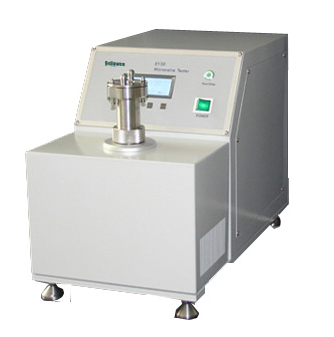Why is micronaire important?
Micronaire value is closely related to yarn quality. Cotton fibers with too low a micronaire value often exhibit poor maturity, are prone to harmful defects, and exhibit poor dyeability. Therefore, only cotton with a moderate micronaire value can achieve both these goals and achieve comprehensive economic benefits.
The relationship between micronaire value and yarn quality cannot be generalized; it is closely related to the yarn count. Low-count yarns with high micronaire values yield high-quality yarns, while fine yarns, especially ultra-fine yarns, require lower values. Coarse yarns have more fibers per unit cross-section, which directly affects yarn strength. Fine yarns have fewer fibers per unit cross-section, which directly affects yarn strength. The micronaire value is a range of fineness indicators, originally measured in units of 10 grams per inch. Due to the instability of the test, the micronaire value is treated as a dimensionless value.
The Development of the Airflow Meter and the Evolution of the Micronaire Value
The micronaire was originally an instrument that used airflow to measure the diameter of a mechanical shaft or orifice. In 1947. W.S. Smith of the United States modified the airflow meter, replacing the mechanical probe with a fiber sample tube, and developed the fiber airflow meter. He collected numerous upland cotton samples, measured the gravimetric fineness (μg/in) and the airflow meter readings. Using the float height of the airflow meter's rotor flowmeter as the independent variable and the gravimetric fineness as the dependent variable, he calculated a linear regression equation and developed a linear scale with units of μg/in. The commercial name for this instrument is Micronaire, which translates to micronaire in Chinese.
In 1950. the United States Department of Agriculture collected additional upland and Asiatic cotton samples and, through experiments, calculated a quadratic regression equation between float height and gravimetric fineness, developing a nonlinear scale. This scale continues to be used today. Initially, it was used only for upland and coarse-staple cotton; a different scale was used for long-staple cotton.
In-depth research into fiber airflow meter theory has revealed that airflow meter readings do not simply reflect fiber fineness, but rather a combination of fineness and maturity. Many scholars refer to airflow meter readings as fineness multiplied by maturity. Internationally, the same micronaire scale is used for all varieties of upland cotton, Asiatic cotton (coarse-staple cotton), and Sea Island cotton (long-staple cotton). Strictly speaking, micronaire values are no longer considered fineness, but some still use this term out of custom.
The Relationship Between Micronaire Value and Yarn Quality and Spinning Process
To produce yarn of a certain thickness and strength to withstand the various stresses of the process and provide the necessary performance for the textile, the yarn cross-section must contain a minimum number of fibers. Therefore, coarse fibers are used to spin coarse yarn, and fine fibers are used to spin fine yarn. All other conditions being equal, finer fibers produce higher yarn strength and better yarn evenness. However, finer fibers are more susceptible to kinking and breaking during processing, which can lead to the formation of neps.
Highly mature cotton fibers have good strength, can withstand mechanical impact during processing and cleaning, are easy to remove impurities, are less likely to produce neps and filaments, and have a high yield rate for finished products. Low-maturity cotton fibers are more likely to form harmful defects and have a low yield rate for finished products. Highly mature cotton fibers have high yarn strength and good yarn evenness. However, over-mature cotton fibers have poor cohesion, resulting in poor yarn strength and yarn evenness. Highly mature cotton fibers also absorb color well and dye fabrics evenly.
The micronaire value is a comprehensive reflection of cotton fineness and maturity. Therefore, it is closely related to yarn quality and spinning technology. Cotton fibers with high micronaire values can withstand mechanical impact, easily remove impurities, and produce yarns with uniform yarn length, a smooth appearance, few defects, and a high yield rate. However, excessively high micronaire values can affect yarn strength. Cotton fibers with too low micronaire values often exhibit poor maturity, are prone to harmful defects, and exhibit poor dyeing properties. Therefore, only cotton with a moderate micronaire value can achieve both these goals and achieve comprehensive economic benefits. Spinning trials conducted by the US Department of Agriculture and the experience of textile mills in China and abroad have shown that low micronaire values result in increased cleaning waste and deteriorate yarn appearance, but can improve yarn strength and spinnable count. Conversely, high micronaire values can reduce yarn cohesion, increase yarn breakage, and reduce spinnable count, but can reduce waste and improve yarn appearance. Therefore, internationally, cotton with a micronaire value between 3.5 and 4.9 is considered normal. In particular, cotton with a micronaire value between 3.7 and 4.2 will be priced higher. This is why the new standard classifies cotton with a micronaire value of 3.7 to 4.2 as Grade A, while cotton with a micronaire value below 3.4 and above 5.0 is designated Grade C.
Micronaire Determination Method
The micronaire determination method follows GB/T 6498-1992. "Test Method for Micronaire Value of Cotton Fibers," and is used in conjunction with GB 1103-1999. The following considerations apply:
Micronaire Standard Samples:
The determination is based on a set of micronaire standard cotton samples, which must be used to calibrate the instrument before measuring the sample. The standards can be International Calibration Cotton (ICC) or national standards. Two national standards are available: GSBW 12002-1996. "HVI Calibration Cotton," and GSBW 12003-1996. "Calibration Cotton."
Sampling Method:
The sampling methods of GB 1103-1999 differ from those of GB/T 6498-1992. The former emphasizes the dispersion of micronaire values across a batch of cotton. GB/T 6498-1992: Laboratory samples are generated from batch samples. The number of samples is determined by the batch size: 1 sample for 100 bales or less; 2 samples for 101 to 300 bales; 3 samples for 301 to 500 bales; and 4 samples for 500 bales or more. After thorough mixing, randomly select micronaire samples. Two test samples are measured for each laboratory sample, each once. If the difference between the two test results exceeds 0.1 micronaire value, a third sample is tested.
GB1103-1999: 30% of the batch samples are randomly selected as laboratory samples. Micronaire values are measured sample by sample without mixing. Testing is then conducted in accordance with the requirements of GB/T 6498-1992.
Micronaire Value Correction:
During testing, test results must be calibrated to the standard using international or national calibration cotton standards. Under standard temperature and humidity, the test results of the calibration cotton samples should differ from the standard value by within 0.1. If this differs, the cause should be investigated. When testing under non-standard temperature and humidity conditions, the results may differ from the standard value by more than 0.1. This is especially true when using an airflow meter at the procurement site. Due to substandard temperature and humidity, the results often exceed the tolerance and require correction. Specific steps:
Place the standard cotton sample in the same environment as the procurement test sample for humidity equilibrium.
Set the micronaire analyzer and other equipment to normal operation.
Test the micronaire value M of the calibration cotton sample. Given the standard micronaire value M0 of the standard sample, the correction value Δ = M0 - M.
Test the micronaire value m of the procurement cotton sample under the same conditions. The corrected micronaire value mo = m + Δ, with mo serving as the actual test result. For simplicity, it is best to use a calibration cotton sample with a standard micronaire value close to the procurement micronaire value. Otherwise, two or three calibration cotton samples with different standard values are generally required to calculate the correction value.


